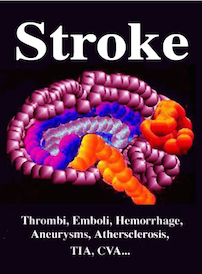Rhawn Gabriel Joseph, Ph.D. and R. E. Gallagher, Ph.D.
UHS/The Chicago Medical School
ABSTRACT
One hundred eighty-five rats reared in either an enriched or restricted environment were tested during adulthood to determine the influence of gender and rearing environment on learning, memory, and 3 related response characteristics, activity, over-responsiveness, and exploratory behavior. Eight experiments were performed. It was found that although females are more active than males, rearing environment does not influence behavior in the running wheel or open field. When tested in a complex compartmentalized open field, females in general and restricted rats are significantly more active than enriched males. In addition, over subsequent testing, restricted animals are increasingly responsive and fail to habituate to the testing stimuli. When tested and retested for maze learning ability, males excel over females; enriched rats maintain their ability to outperform restricted rats, although both groups had previously learned the problem. Moreover, enriched rats demonstrate a greater tendency to explore and make irrelevant section entries on a maze that is problem free. Restricted rats, specifically, and females generally, have difficulty suppressing a learned repetitious pattern of rewarded responding when it is subsequently punished; restricted rats were deficient in the ability to passively avoid or escape noxious stimuli. These experiments, as well as supporting evidence in the literature, indicate that rats reared in a restricted environment develop a limited behavioral repertoire which is characterized by a generalized tendency to overrespond, a propensity towards preserverating in repetitious patterns of limited and circumscribed responding, a failure to habituate to repeated contact, and that these animals suffer severe disturbances involving learning and short and long term memory.
Introduction
Several studies have indicated that restricted environmental stimulation during infant development produces deficiencies in the acquisition of adaptive behaviors in a variety of learning tasks (Denenberg, Karas, Rosenberg & Schell, 1968; Gardner, et al. 1975; Joseph, 1979; Konrad & Melzach, 1975; Ough, Beatty, & Khalili, 1972). For example, Ough et al. (1975) have shown that these animals acquire active avoidance responses more slowly than enriched rats. Recently, Joseph (1979) suggested that this failure to efficiently learn adaptive behavioral strategies is due to the tendency of restricted animals to overrespond to the stimulus characteristics of the testing environment and to engage in perserverative repetitive response patterns. Although past studies have attempted to link the learning deficits of restricted rats to excessive "exploratory " behavior (Woods, Ruckelshaus, & Bowling, 1960; Zimbardo & Montgomery, 1957), these findings have not been supported by subsequent investigations (Brown, 1968; Denenberg & Morton, 1962; Gardner et al., 1975; Joseph, 1979; Smith, 1972). Rather, these tendencies to become highly aroused and over-responsive when presented with novel stimulus (Joseph & Casagrande, 1978 et al.) appear not to be a product of a heightened investigatory response, but to result from a pronounced difficulty in inhibiting spontaneous movement and behavior as well as differences in rate of habituation (Einon & Morgan, 1976, 1977; Joseph, 1979; Konrad & Bagshaw, 1970). In fact, when tested in situations that allow for the differentiation of selectively directed exploratory responses versus generalized random activity, enriched animals appear to be significantly more exploratory than rats reared in a restricted environment (Forgus, 1954; Joseph, 1979; Lore & Levowitz, 1966; Luchins & Forgus, 1955; Turpin, 1977).
Nevertheless, the nature of the deficit resulting from restricted environmental rearing conditions remains suggestive but inconclusive. The purpose of the present series of experiments was to separate and determine the influences of enriched versus impoverished rearing conditions on 3 related response characteristics: activity (Experiment I and II), exploration (Experiments III and IV), and over-responsiveness (Experiments III, VI, VII, and VIII). In addition, in one study (Experiment V) we examined information storage or memory in the maze learning process, as well as the influences of gender. Experiments I, II, III, and VI were conducted at the same time period and Experiment V and the latter half of Experiment IV were conducted after the completion of Experiments VII and VIII. However, for the sake of organizational clarity they are presented as logically consecutive.
General Methodology
One hundred eighty-five rats (Rattus norvegicus), born to 20 Zivic-Miller females housed in standard laboratory cages (25x 13 x 18 cm), were weaned and introduced into the experiments at 10 days of age. All subjects were born within 36 hr of one another. Subjects were assigned by the split litter technique to 1 of 4 conditions: enriched males (N=50); enriched females (n=43); restricted males (n=50); and restricted females (n=42). Method
Enriched Environment
Six large cages (1.6 x .76 m) housed in an animal colony room served as the enriched environment. Cages, constructed of a plywood frame with 1 cm2 wire mesh floors and walls and wooden ceiling, were equipped with 1 wooden shelf and a variety of "toys": cans, bottles, bolts, small cages, and paper.
Restricted Environment
Restricted subjects were housed individually in standard laboratory suspended cages in a small ventilated room (3.96 x 1.52 m) large enough to accommodate 2 cage racks standing end to end, and permit the watering and feeding of subjects without undue disturbance. Temperature was maintained at approximately 21 degrees Celsius. At all times extraneous sound was masked with 85-90-dB white noise (BRS/LVE audio generator, No. AU-901/112-10). A reversed 12-hr light/12-hr dark diurnal cycle was maintained in coordination with that of the colony room.
After environmental assignment restricted rats were not handled again until approximately 72 days of age. During the lst 25 days of enriched rearing males and females were housed together in 4 large enrichment cages, after which they were segregated by gender into 6 enrichment cages, approximately 17 males and 15 females per cage.
Throughout environmental enrichment all subjects were handled and transferred as a group (cage colony), males to a previously all-female cage and vice versa, twice a week. In addition, cages were shifted about the colony room and enriched with daily changes and manipulation of objects.
At approximately 72 days of age, all subjects were removed from their respective environments, ear-punched for identification, weighted, separated by gender, and housed individually in standard rack-suspended cages within the colony room. At 72, 73, and 74 days of age all subjects were briefly handled to reduce cage emergence stress, and at 79 days of age they were again weighed. Subjects were assigned by identification number, gender, and environmental condition to 1 to 5 experiments according to predetermined specifications. Each experimental group was composed of equal numbers of males and females per rearing condition. In addition, subjects assigned to Experiment I (activity wheel) and II (open field) were later assigned to participate in Experiment VII and VIII (passive and escape avoidance), respectively. Prior to testing all subjects were removed from the colony room in their home cage and given approximately 5 min testing room habituation time. Furthermore, all subjects were tested during their dark cycle with dim red illumination and 75-80-dB white noise.
Experiment 1
The purpose of Experiment 1 was to isolate and examine a specific aspect of activity, locomotor behavior as exhibited in the running wheel.
Method
Nine running wheels, each .45 m in diameter and .12 m wide, mounted in 3 rows of 3 on a running wheel rack standing 1.82 m high, were used to measure activity. Cumulative counters adjacent to each wheel tabulated each revolution.
Eighteen enriched and 18 restricted rats, approximately 80 days of age, were placed individually in a running wheel for 15 min and tested daily for 4 consecutive days. For each 5-min time segment (3 total) per day, the cumulative number of revolutions was recorded. At the end of each test subjects were returned to the colony room and fecal material removed from the wheel. Three enriched and 3 restricted rats were tested simultaneously during each test session and assigned to running wheels on a random basis, 2 subjects per row with an empty wheel between them. Males were always tested first.
Results
A 2 x 2 x 4x 3 analysis of variance using orthogonal comparisons was performed on Gender, Environment, Trials (Days 1-4), and 5-min Time Segments, with the last 2 factors being repeated measures of the dependent variable number of revolutions. Females were significantly more active than males (F= 41.32, df=1/32, p<.0001). A significant main effect for Time Segments was evident such that all rats ran more during the 1st than 2nd or 3rd segments (F=142.01, df=1/32, p<.0001) and ran less during the last 5 min than during the 2nd 5-min segment (F=17.21, df=1/32, p<.0004). Females were also found to exhibit an initially higher level of running activity which decreased at a greater rate than that of males during all time segments (F=12.16, df=1/32, p<.001) and during Segments 2 and 3 as compared to 1 (F=5.05, df=1/32, p<.03). (See Figs. 1-3)
Experiment II
Open-field behavior was analyzed to determine if the failure to discover rearing dependent differences in locomotor activity in Experiment I is specific to the running wheel or is similarly expressed across testing conditions.
Method
Subjects were tested in a 1.22 m2 flat-gray open field with 46-cm-high walls and a floor divided by thin black lines into sixteen 30.5-cm squares.
Sixteen enriched and 16 restricted rats, approximately 84 days of age, were placed individually on a starting line at the center of the field and observed for 5 min by an experimenter seated on an elevated platform behind a curtain. The experimenter recorded movement latency, incidence of rearing, and number of squares entered as determined by head and shoulder entries. At the end of each testing session fecal boli were counted and removed, and the field sponged with a mild cleaning solution. All subjects were tested for 2 consecutive days.
Results
A 2 x 2 x 2 analysis of variance was conducted on Gender, Environment, and a repeated measure for each of the dependent variables: square entries, movement latency, rearing, and fecal boli. Main effects were found only for Gender: females made significantly more square entries (F=8.32, df=1/28, p<.009), had a lower movement latency(F=12.85, df=1/28, p<.003), reared significantly more(F=9.71, df=1/28, p<.005), and deposited fewer fecal boli than males(F=6.03, df=1/28, p<.03). Females were also found to have made fewer square entries on the 2nd day of testing as compared to males, who increased their activity (F=3.49, df=1/28, p<.05). A significant interaction was found for Gender and Environment such that restricted males deposited the most fecal boli and restricted females the fewest as compared to all other groups (F=4.15, df=1/28, p<.05). In addition, Pearson product-movement correlations indicated significant positive correlations (p<.05) between square entries and incidence of open-field rears for all groups except enriched males, significant negative correlations between movement latency and defecation (Day 1) for enriched females and significant negative correlations between square entries and defecation for restricted males.
Discussion
The results of Experiment I and II strongly support previous findings showing females to be significantly more active than males (Blizzard, Lippman, & Chen, 1975; Denti & Epstein, 1972; Russell, 1973). Also, the finding that females moved from the starting line significantly sooner than males is in agreement with past demonstrations of shorter movement or emergence latencies in females (Meyers, 1965; Satinder & Hill, 1974; Woods et al., 1960). A further indicant of a greater level of activity in females is the finding that females made significantly more rears than males and that this variable was significantly correlated with activity in all group except enriched males.
Although rearing condition did not affect open-field defecation, males, as found in 15 other independent studies (see Archer, 1975, for review), defecated significantly more than females. In our opinion, however, due to the fact that males have a greater food intake than females (Bell & Zucker, 1971), and that open-field defecation and body weight (Russell, 1973), these differences are not related to emotionality or novelty-induced fear responses.
Contrary to previous reports (Gardner et al., 1975; Smith, 1972; Woods et al., 1960), rearing condition did not affect activity level. Similar results have been presented by Brown (1968) and Denenberg and Morton (1962). In regard to these conflicting finding, unpublished observations (R. Joseph) of both Holtzman and Zivic-Miller rats have suggested that the visible presence of the experimenter will markedly increase speed of ambulation in restricted subjects and females in general. Unfortunately, the literature is not complete as to the type of controls (e.g., lighting, white noise) employed, or proximity/visibility of the experimenter; hence, meaningful comparisons are not possible. We suggest, however, given the controls present in Experiments I and II, that activity per se is not affected by rearing condition.
Experiment III
The purpose of Experiment III was to examine differences in activity elicited in a complex compartmentalized open field (closed field).
Method
A 38.1 x 38.1-cm closed field (describing in detail by Joseph, Hess, & Birecree, 1978) painted flat-black and with 2 start (goal) boxes (12.7 x 43.2 cm) attached at opposite ends was used for behavioral testing.
Twenty enriched and 20 restricted rats, approximately 84 days of age, were placed in 1 start box, following testing room habituation, for 5 min. On the following day this procedure was repeated but with the subject placed in the 2nd start box. On the 3rd consecutive day of testing, each subject was allowed 15 min in the start box in which it was habituated on Day 1; however, at the end of this period the door to the closed field was removed and the subject allowed to enter. Exactly 10 min after the subject emerged into the field it was removed and returned to the colony room. After 48 hr all subjects were retested.
Scoring
The experimenter observed all behavior from behind a 1-way mirror in a room adjacent to the testing room. Total closed field locomotion was divided into 3 separate scores: start box entries, section-square entries (squares entered inside the barrier board maze sections; see Test Patterns E-1 and E-4 in Joseph et al., 1978), and outer-square entries (squares crossed in the open region outside the barrier boards and between the 2 start boxes). A section-square or outer-square entry was scored when the subjectís head and shoulders entered one of the 10.2 x 10.2-cm squares into which the field was divided. In addition emergence latency and start box entries were tabulated.
Results
Emergence Time
Significant main effects were found for Gender (F=8.80, df=1/36, p<.005) and Trials (F=13.71. df=1/36, p<.001). In addition, females significantly decreased their emergence time latency on the 2nd as compared to 1st trial. Restricted males, however, decreased their latency to a greater extent than all other groups, whereas enriched males had the smallest decrease (F=5.25, df=1/36, p<.05).
Start Box Entries
Main effects were found only for environment, such that restricted rats had more start box entries than enriched (F=19.24, df=1/36, p<.0003). The following significant interactions were indicated: enriched males made the fewest start box entries (F=7.53, df=1/36, p<.01), and enriched subjects made fewer entries on Trial 2 as compared to Trail 1, whereas restricted animals increased their entries (F=4.34, df=1/36, p<.05).
Section-Square Entries
Females were found to make significantly more square entries than males (F=18.62, df=1/36, p<.0003) and restricted rats made more entries than enriched (F=17.02, df=1/36, p<.0004). Significantly more entries were made on the 2nd testing day (F=13.27, df=1/36, p<.002); however, this was largely an interactional effect as restricted rats increased their section-square entries whereas enriched subjects actually decreased their activity over trials (F=9.51, df=1/36, p<.005). Specifically, both these latter effects appear to be due to increases in restricted male activity, as males but not females were found to increase activity over trials (F=7.59, df=1.36, p<.009).
Outer-Square Entries
Significant main effects were found for gender and environment, as female made more square entries than males (F=14.79, df=1/36, p<.0008) and restricted rats attended to, the behavioral responsiveness of restricted subjects was, nevertheless, already at a significantly higher level than that of enriched rats on the 1st day of testing. Furthermore, activity in the open outer-square region was significantly correlated with the behavioral responsiveness of restricted rats in the section-square region (Pearson product-movement; p<.05), whereas in enriched rats these indices were either negatively or non-significantly linked. Hence these findings suggest that restricted rats fail to habituate to stimuli as rapidly as enriched rats (Einon & Morgan, 1976, 1977) and that behavioral responsiveness in these animals is generalized and nonspecific. Moreover, we must point out that factors measured in this experiment were dependent upon activity and speed of response, variables which have repeatedly been demonstrated to be at best only weakly linked to an animalís tendency to engage in exploratory behavior (Fowler, 1965). That is, dashing from object to object, or section to section, does not indicate greater exploratory behavior, but rather suggest a deficit in the ability to attend selectively to novel stimuli for an appreciable length of time.
Although females were also found to demonstrate greater levels of responsiveness and therefore a greater tendency to become distracted and overrespond to novel stimuli (Joseph et al., 1978), this behavior may be an artifact of their normally greater level of activity. For restricted subjects, however, as compared to their behavior in the relatively more homogeneous open field and running wheel, the presence of complex novel stimuli clearly contributes to their locomotor over-responsiveness.
Experiment IV
A major source of error in past attempts to define the role of exploration in maze learning has been the assumption that exploratory behavior is similarly aroused in an open field containing little or no complexity and in a complex maze-learning task in which rats have been food-deprived for 18-23 hr. Rather, the accumulation of errors during a maze-learning task can only be determined as resulting from exploratory behavior in hungry animals when the competing stimuli relevant to hunger, as well as complex novel distractions, are maintained for comparative purposes across all measures of behavior (Joseph, 1979; Joseph et al., 1978). The purpose of Experiment IV was to examine exploratory behavior, as well as the possible development of repetitive response habits which may occur during maze learning, utilizing a paradigm described in detail elsewhere (Joseph, 1979; Joseph et al., 1978).
Method
The apparatus and closer-field barrier board placements were exactly as described for Experiment III with the exception that at the distal end of each start box (goal box) was placed a small (2.5cm) plastic Petri dish for the dispensing of Noyes food pellets (see Joseph et al., 1978).
Twenty enriched and 20 restricted rats, approximately 86 days of age, served as subjects. Food deprivation schedules and training remained as described elsewhere (Joseph, 1979; Joseph et al., 1978) with the exception that during the initial training session (Days 1 and 2) subjects received 40 Noyes food pellets, 2 at a time every 20 sec while in each goal box (in this regard was similar to habituation procedures employed in Experiment III). In addition, prior to the placement of barrier boards in more than enriched (F=67.52, df=1.36, p<.0001). In addition, enriched rats were found to decrease their activity over trials, whereas restricted animals increased their responsiveness (F=5.90, df=1.36, p<.05).
Discussion
Of all groups, enriched males had the longest emergence time latencies, and the fewest start box, section-square, and outer-square entries. Although females, as found in Experiment II, demonstrated the shortest emergence time latency, restricted males differentially decreased their emergence time at a greater rate than all other groups, approximately those of females on the 2nd day of testing. This interaction of Environment and Gender over trials also parallel subsequent increases in activity by restricted subjects during the 2nd day of testing. Whereas enriched rats differentially decreased their returns to the already familiar start boxes, as well as their section and outer-square entries, restricted rats increased their behavioral responsiveness overall. This surprising finding is contrary to previous reports showing responsiveness to novel stimuli to decrease with repeated exposure (Berlyne, 1960; Joseph, 1979; Joseph et al., 1978; Russell, 1977; see also Experiment I and II). Moreover, increases rather than decreases in responsiveness argue strongly against an "exploration " interpretation of the restricted ratsí behavior unless we are wiling to suggest that the closed field and start boxes become more novel as testing progressed.
Although closed-field activity may increase as the novelty of the testing situation decreases, that is, as the field became more easily differentiated and thus selectively the open field, subjects were required to complete 20 separate shuttles (trials) between goal boxes on both the 3rd and 4th day of training. On the 1st day of testing (Day 1) the procedures described above and elsewhere were repeated, except that barrier boards were placed symmetrically in the field in a manner identical to that used for Experiment III such that a clear path was left between goal boxes (see Exploratory Patterns E-1 and E-4, Joseph et al., 1978). Scoring remained identical to that employed in Experiment III for section-square entries. Hence, all subjects were fun for 20 trials per test.
Upon completion of the 1st exploratory test, assessment of maze learning and retention was begun (Experiment V). Eighteen days after the 1st exploratory test, and immediately following the retesting of maze learning retention, all subjects were retested on the task described here for Experiment IV. Hence, both Results and Discussion for Experiments IV and V will be reported together.
Experiment V
The purpose of Experiment V was to assess ability to retain previously learned information. On the day after completion of the 1st test in Experiment IV, the barrier board pattern was replaced with a practice maze (P-3) of the Davenport, Hagquist, and Rankin (1970) series, such that the barrier boards were now obstructing the formerly clear path between goal boxes. All subjects were run for 20 trials. The next day (Day1) all subjects were required to learn a single maze problem (T-8, Davenport et al., 1970). Trials and errors were scored according to previously described criteria (Joseph et al., 1978). Upon completion of this test subjects were returned to ad lib feeding. After 15 days had elapsed, all subjects were again reduced to 85% of their free feeding weight, retested on T-8 for retention, and the following day retested as described for experiment IV.
Results
A 2 x 2 x 2 analysis of variance was performed on Gender, Environment, and a repeated measure for each of the dependent variables: section-square entries, trials, and errors.
Section-Square Entries
No significant main effects were found for Gender. Enriched rats made more section-square entries than restricted animals (F=9.44, df=1/36, p<.005), and enriched males were more exploratory than all other groups (F=11.71, df=1/36, p<.001). All subjects significantly decreased the number of section-squares entered on the 2nd trials as compared to the 1st day of testing (F=19.25, df=1/36, p<.001), except for restricted females whose entry scores remain stable (F= 8.52, df=1/36, p<.006). Trials and Errors
The following significant differences were found: Males made fewer errors than females (F=3.89, df=1/36, p<.05), and enriched rats learned the maze problem with fewer errors (F=9.41, df=1/36, p<.005) and trials (F=6.20, df=1/36, p<.01) as compared to restricted rats. Furthermore, all subjects significantly improved their 2nd test performance, making fewer errors (F=139.28, df=1/36, p<.001) and taking fewer trials (F=56.77, df=1/36, p<.001). (See Fig. 4.)
Discussion
The results of Experiment IV clearly demonstrate that when novel stimuli are placed in an otherwise familiar area between goal boxes within which subjects have learned to receive a food reward, enriched rats make more non-rewarded section-square entries than restricted animals. These results are not without precedent in that numerous studies have indicated that enriched rats are far more exploratory, seeking greater variability, novelty, and unfamiliar stimuli, than restricted animals (Forgus, 1954, Joseph, 1979 et al.). Hence, the supposition that restricted rats do poorly on maze learning tasks due to excessive exploration is disproved. Nevertheless, the finding that restricted rats appear more responsive to the ostensibly similar stimuli used in Experiment III, but less responsive to the same stimuli in this experiment, seems paradoxical. In part, we suggest that these differences reflect a perseverative tendency in restricted animals, such that repetitive sequences of movement once learned (e.g., shuttling repeatedly between goal boxes) persist and compete with alternative behaviors. As pointed out by Melzack (1968), deprived dogs will often develop position habits that seem to completely dominate their behavior. Hence, in that all subjects were extensively trained to run between goal boxes in order to obtain food rewards, this repetitive running may have become a dominant habitual pattern of responding in the restricted subjectís behavioral repertoire.
The evidence presented in Experiment V confirms that maze learning is an ability at which males excel (Davenport et al., 1970; Joseph, 1979; Joseph et al., 1978). Possibly, as indicated by Experiment III, this is a result of females being more easily distracted and thus over-responsive to novel stimuli.
Although both enriched and restricted rats significantly improved their performance during the 2nd test of maze learning, the gender and environmental differences in acquisition performances were maintained. This is surprising, in that all subjects were trained to criterion on the 1st test and might, therefore, be expected to perform similarly on the 2nd test. Nevertheless, restricted males failed to perform as well in their 2nd maze learning test as did the enriched males on their 1st. The results suggest that restricted rearing conditions significantly interfere with the retention of learning. A similar finding has been presented elsewhere (Joseph, 1979). However, as enriched females failed to perform as well as enriched males on the 2nd test, factors not immediately apparent may be responsible.
Experiment VI
Method
All training and testing took place in standard Skinner box research chests (Garson Stradler Co., Model X1101), equipped with one 3-cm speaker for delivery of white noise, and 2 bar switches modified to activate delivery of water or electric shock.
Twelve enriched and 12 restricted rats, approximately 81 days of age, were weighed and immediately placed on a 23-hr-per-day water deprivation rhythm and reduced to approximately 90% of their weight. Subjects were trained to bar press for a water reward (2:1 ratio schedule) for 4 hr per day, every other day, until at least 50 rewarded responses occurred in each of 2 consecutive training sessions. Two test sessions were then conducted with 1 day between tests. Each subject was allowed to make 10 initial bar presses for 5 water rewards. For each additional bar pres, the subject received one 1.5-mA shock for .5 sec, and no further water rewards. Each test was terminated 30 min after the subject received its first shock.
Results
A 2 x 2 x 2 analysis of variance was computed for Environment, Gender, and bar presses, with a repeated measure on the last variable. We found that females made significantly more bar presses than males (F=10.31, df=1/20, p<.005), and restricted rats made more presses than enriched (F=5.44, df= 1/20, p<.04). All subjects decreased the frequency of bar pressing on Day 2 as compared to Day 1 of testing (F=114.76, df=1/20, p<.0001). No other significant differences were found.
Discussion
The results of Experiment VI indicate a significant deficit in the ability of restricted rats to suppress an over learned and formerly rewarded pattern of behavior when it subsequently results in the delivery of punishing electric shock. This evidence is similar to the finding that dogs and rats reared in restricted environment have difficulty extinguishing a learned response when it is no longer rewarded (Melzack, 1968; Ough et al., 1972). As suggested in Experiment IV, the results demonstrate that when trained to respond in a limited or circumscribed manner, restricted rats are deficient in the ability to respond in a manner inconsistent with their learned motor pattern, due possibly to the tendency to develop perseverative response hierarchies. Although all subjects apparently learned from their contact with bar-press-induced shock to terminate their bar-pressing activity, enriched males ceased responding almost immediately after the 1st shock on Day 2 of testing, whereas the bar-press termination levels of the remaining groups on Day 2 fell approximately at or well above the termination level of enriched males on Day 1. Unfortunately, the data do not indicate whether the remaining groups ceased responding more quickly on Day 2 due to the shock or the cessation of water reward.
Experiments VII and VIII
Several studies have suggested that restricted rearing may significantly affect an animalís ability to actively or passively avoid painful stimulation (Denenberg et al., 1968; Gardner et al., 1975). The present experiment was an attempt to replicate and extend these findings.
Method
Subjects were tested in a 36 x 24-cm Plexiglas observation box, 24 cm deep, with a removable flat-black wooden lid. The perch, and L-shaped 8 x 11-cm flat-black wooden platform, was suspended from the lid and positioned flush with the center of the back wall 8 cm above the grid floor. A Foringer (Model 41211) delivered scrambled shock to the parallel brass rod chamber floor.
Thirty-two enriched and 32 restricted rats, all of whom served as subjects in Experiments I and II, were assigned to Experiments VII and VIII, respectively, and began testing at approximately 88 and 90 days of age. Each animal was placed inside the testing box upon the perch, and allowed to remain there for a maximum of 30 sec. Subjects that had not stepped down at the end of this period were removed and placed on the grid floor. For Experiment VII, immediately upon touching the floor subjects received a maximum of twenty .5-sec 2mA electric shocks at 1.5-sec intervals. For Experiment VIII, Days 1-3 were habituation days, such that following placement subjects were allowed to step from the perch and investigate the apparatus without being shocked. On Days 4-6, however, these subjects received a single 2-sec 2mA shock immediately upon alighting from the perch and touching the grid floor.
For both experiments, if the subject returned to the perch, latency to do so was recorded (Experiment VII, number of shocks received; Experiment VIII, number of sec). Subjects that did not return to the perch in the allotted time period (20 shocks or 15 sec) were removed from the apparatus and given a step-up (escape) latency score of either 21 or 16. In addition, throughout all 5 or 6 days of testing, initial step-down latency (passive avoidance in sec) was recorded. Subjects received a latency score of 31 if they had not stepped down within 30 sec of placement.
Results
A 2 x 2 x 5 (Experiment VII: passive and escape latency), 2 x 2 x 6 (Experiment VIII: passive), and 2 x 2 x 4 (escape) analysis of variance using orthogonal comparatives were performed for Gender and Environment, with repeated measures on the dependent variables.
Passive Avoidance
For both experiments, a significant main effect was found for Environment such that enriched rats took longer to step down than restricted subjects (VII: F=108.11, df=1/28, p<.0001; VIII: F=5.23, df=1/28, p<.02): In Experiment VIII main effects were also found across trials such that all subjects took longer to step down on Days 5 and 6 than Days 1-4, when no shocks could be anticipated (F=29.56, df=1/28, p<.0001), and on Day 6 as compared to Day 5 (F=4.58, df=1/28, p<.05). A significant interaction (Experiment VIII) was found for learning across trials, such that enriched rats stayed on the perch longer than restricted rats after the onset of the shock trials (Days 5 and 6: F=7.32, df=1/28, p<.01).
Escape Avoidance
Significant main effects were found for Environment and Trials, such that enriched rats had a shorter step-up setup latency than restricted (VII: F=4.03, df=1/28, p<.05; VIII: F=5.24, df=1/28, p<.02). In experiment VII all subjects took fewer shocks to escape across Days 2-5 (F=68.90, df=1/28, p<.0001) and Days 3-5 (F=24.50, df=1/28, p<.0001) as compared to Day 1. Similarly in Experiment VIII, setup latency decreased for all subjects on Days 4-6 as compared to Day 3 (Days 1-3), when no shock was given (F=29.56, df=1/28, p<.0001) (in that no shocks were given and no rat climbed back upon the perch, Days 1 and 2 were eliminated from the analysis; Day 3 served as the representative identical control), Days 5 and 6 as compared to Day 4 (F=12.6, df=1/28, p<.001), and Day 6 as compared to Day 5 (F=5.17, df=1/28, p<.05). However, these improvements were largely the result of enriched rats which, in comparison with restricted subjects, decreased their latency on Days 4-6 as compared to Day 3 (F=14.3, df=1/28, p<.001). In general, females were also found to make greater improvements in stepup latency on Days 3-5 (VII: F=4.93, df=1/28, P<.05) as compared to Day 2 (See Figs 5 and 6).
Discussion
Previous reports have indicated that female rats acquire an active avoidance response more efficiently than males (Barrett & Ray, 1970; Beatty & Beatty, 1970; Denti & Epstein, 1972). The results of Experiment VII, although not directly testing active avoidance, indicate that though females are not superior to males, they do make greater improvements in reducing escape latencies. Extending the findings of Denenberg et al (1968) and Ough et al. (1972), the results of both experiments demonstrate that enriched rats significantly excel over restricted rats in escape avoidance performance. These findings suggest a rearing-dependent deficit in learning and the selective directing of responses to adaptive ends.
When required to simply remain on the perch, the behavior of males and females of like rearing condition was similar; however, restricted rats, unlike enriched, consistently failed to maintain a passive position the perch, jumping down almost immediately after placement throughout testing. Although these rearing-dependent differences may be due to differential responsiveness to shock or novelty, the results of Experiment VIII do not support these speculations. Hence, even though the number of shocks was reduced to 1, and all subjects were given 3 days of exposure to the testing apparatus prior to shock, differences due to rearing, as established in Experiment VII, were maintained.
Although all groups learned to remain upon the perch longer with each successive test, enriched rats demonstrated a superior ability to learn from past experience with the shock, as well as a greater ability to suppress and inhibit the naturally occurring step-down response. The finding that restricted rats had great difficulty in inhibiting their behavior throughout testing is suggestive of a perseverative tendency among restricted animals, as discussed in Experiments IV and VI, as well as of an inability to engage in behavior which is inconsistent with continuous motor activity. These interpretations are supported in part by previous studies with dogs (Thompsom & Heron, 1954) and rats (Gardner et al., 1975) in which restricted subjects demonstrated poor performance in delayed response and passive avoidance.
General Discussion
The evidence presented in this series of studies demonstrates that rats reared in a restricted environment suffer from severe disturbances of learning and memory, and develop a limited behavioral repertoire which is dominated by a generalized tendency to over respond to various stimulus contexts, a propensity towards perseverating in repetitious patterns of limited and circumscribed responding, a difficulty in controlling and suppressing spontaneous behavioral expression, and a failure to habituate to repeated contact with stimuli. We suggest, however, that restricted rearing facilitates tendencies to overreact, rather than influences activity per se. As demonstrated in Experiments I and II, gender, but not rearing environment, influences activity in relatively homogeneous environments that are free of complexity or novel distractions. However, when placed in a complex environment (Experiment III) or testing situation requiring the inhibition of spontaneous (Experiment VII and VIII) or learned motor sequences (Experiment VI), both restricted rats and females in general (excluding Experiments VII and VIII) respond with heightened activity levels and perseveration of ongoing motor patterns which then compete with alternative response choices, such as behavior requiring the suppression of activity. Moreover, these findings cannot be attributed to a heightened exploratory drive, for a pronounced lack of exploratory responding characterized restricted rats here (Experiment IV), as well as an inability to attend selectively to stimuli for an appreciable length of time (Experiment III). Hence, restricted rearing creates tendencies to over respond, and produces profound deficits in learning ability and in short and long-term memory.












